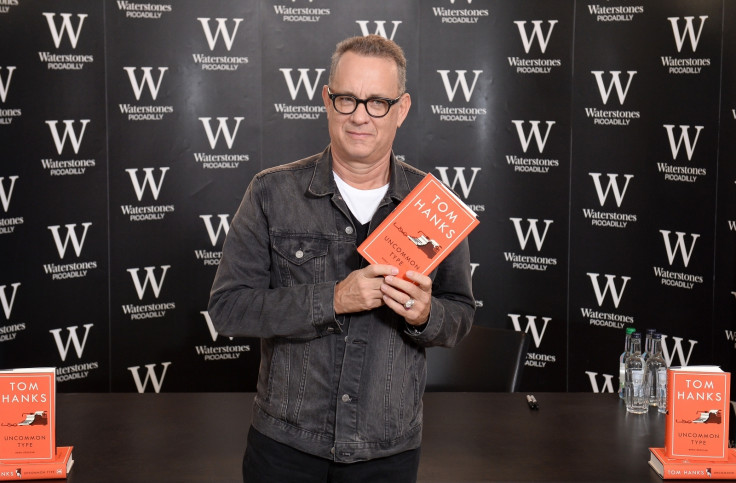Tom Hanks gives tutorial to fellow father on 'high five, down low, too slow' move
In the two-page letter, Hanks shared with Teperman a whole system that he has in place for introducing the time-tested dad trick.
Tom Hanks has frequently been referred to as "America's Dad" for the past few years. The Oscar-winner stayed true to his reputation when he recently offered some fatherly advice to a fellow dad on the classic "down low, too slow" move.
Zack Teperman, father to a two-year-old daughter, reached out to Tom Hanks to get his views on the classic "high-five, down low, too slow" bit, asking him what age he thought it was appropriate to pull his hand away from his daughter for the "too slow" move. He also included a photo of him and his girl mid-high-five. Teperman recalled the conversation to TMZ and revealed that he received a letter from Hanks in response to his query after two weeks.
In the two-page letter typed on one of his beloved typewriters, Hanks shared with Teperman a whole system that he has in place for how and when to introduce the time-tested dad trick of "down low, too slow."
"First the child gets the High part right. Then age and maturity leads to meeting the Down second act. This combo of High Five and Down Low continues for some time. High Five! Down Low! A relationship is born," the father-of-four wrote.
Elaborating on the system, the 63-year-old added that a scenario is to be followed to introduce the trick to the kid when they are about age seven, having established high five and old enough to "rag" on dad "in good humour and affection." In the technique carefully planned by Hanks, a child should be answered with the trick when he starts making jokes at his father's expense.
"So, the child makes a loving joke at your expense. Everyone laughs. You say, 'You are so funny and I love you very much. High Five! After executing the high five, then the dad says "Down low" and puts his hand out, only to withdraw it at the last second. "Too slow!" the "Forrest Gump" actor wrote.

"I hope this clears up any and all confusion. This stuff works," Hanks concluded, noting that he has tested it with his four grown up children, and is yet to introduce it to his three granddaughters.
© Copyright IBTimes 2025. All rights reserved.





















